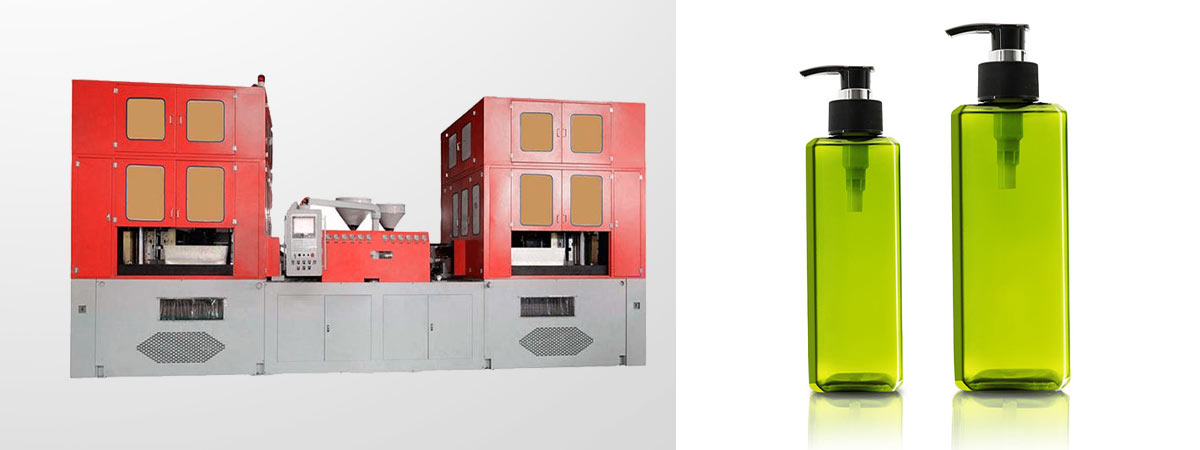

An injection stretch blow moulding machine shapes bottles with high precision, leading to consistent thickness and strong walls. Uniformity in bottle production helps prevent weak spots that can cause leaks or breaks. Manufacturers rely on injection stretch blow molding to align plastic molecules and boost durability. Quality remains critical in packaging, as it protects products and maintains consumer trust.
Uniform and strong bottles safeguard contents and support efficient distribution.
Key Takeaways
- Injection stretch blow moulding machine creates bottles with consistent wall thickness, preventing weak spots that can lead to leaks or breaks.
- The biaxial stretching process aligns polymer chains, enhancing the strength and durability of bottles compared to other production methods.
- Advanced monitoring systems in ISBM machine ensure high quality by minimizing variations during production.
- Automation and real-time inspection technologies reduce human error, leading to consistent product quality and fewer defects.
- Using recycled materials in ISBM machine supports sustainability while maintaining high-quality standards for packaging.
ISBM Machine Benefits
Uniformity in Bottle Production
An ISBM machine delivers outstanding uniformity in bottle manufacturing. Operators achieve precise control over the stretching of preforms, which leads to consistent wall thickness. The process aligns polymer molecules, improving both strength and uniformity. Advanced monitoring systems track production parameters, minimizing variations and ensuring high quality.
| Mechanism | Description |
|---|---|
| Precise Control of Preform Stretching | ISBM allows for exact control during the stretching of the preform, leading to consistent wall thickness. |
| Better Material Orientation | The stretching process in ISBM aligns the polymer molecules, improving strength and uniformity. |
| Advanced Monitoring Systems | Continuous monitoring of production parameters ensures that variations are minimized, enhancing uniformity. |
The tolerances achieved by an injection stretch blow moulding machine are measured in microns. This level of precision is essential for high-speed production and reliable bottle performance.
Manufacturers using ISBM machine report exceptional dimensional consistency and tight tolerances. The process produces seamless, flash-free containers with smooth finishes. It supports a wide range of thermoplastics, making it ideal for beverage bottles and other packaging needs.
Enhanced Strength and Durability
Injection stretch blow molding improves the strength of bottles by stretching the preform in two directions. This biaxial orientation aligns the polymer chains, resulting in bottles with superior durability and resistance to impact. The process also enhances barrier properties, drop impact resistance, and top load strength, making it superior to other bottle production methods.
| Aspect | Findings |
|---|---|
| Preform Cooling Time | The study determined the optimum cooling time for bottle preforms through structural analysis. |
| Structural Analysis | Validated experimental findings through simulation, showing the impact on bottle durability. |
| Comparison of Results | Experimental results were compared with simulation results, highlighting the effectiveness of ISBM. |
- Biaxial orientation enhances the strength of ISBM bottles.
- The process involves stretching the PET preform in two directions, which aligns the polymer chains.
- This alignment results in improved strength, clarity, and gas barrier properties.
ISBM machine consistently produces bottles that meet strict quality standards. Manufacturers benefit from improved durability, which protects products and reduces waste. The technology ensures that beverage bottles and other containers maintain their integrity throughout distribution and use.
Injection Stretch Blow Molding Process
Injection and Preform Creation
The injection stretch blow moulding machine begins the process by producing a preform. Operators feed PET resin into the ISBM machine, where it melts and forms into a test-tube-shaped preform. This stage determines the foundation for bottle uniformity and strength. The ISBM machine uses precise molds to control wall thickness, length, and neck finish. Uniform wall thickness ensures consistent cooling and strength in the final bottle. Optimized preform length reduces material use and improves processing times. A streamlined neck finish allows for faster cooling and better uniformity.
| Preform Feature | Sub-Optimal Design | Rational Design | Impact on Cycle |
|---|---|---|---|
| Wall Thickness | Non-uniform, excessively thick | Uniform, minimized for application | Shorter fill, pack, and cooling times |
| Preform Length | Unnecessarily long | Optimized for bottle volume | Potentially shorter fill and handling |
| Neck Finish | Overly complex, thick sections | Streamlined, efficient cooling | Faster cooling in the critical neck area |
The ISBM machine ensures that each preform has the correct properties for the next stages. This careful preparation supports high-strength plastic products and sets the stage for exceptional clarity and strength in the finished bottle.
Axial Stretching and Radial Blowing
After preform creation, the ISBM machine reheats the preform to the ideal temperature for stretching. The next step involves axial stretching and radial blowing. The machine inserts a stretch rod into the preform, pulling it lengthwise (axial stretching). At the same time, compressed air inflates the preform outward against the mold walls (radial blowing). This dual action aligns the polymer chains in two directions, a process known as biaxial orientation.
- Axial stretching unfolds polymer chains and aligns them parallel to each other.
- Biaxial orientation improves material properties such as strength and clarity.
- Radial blowing ensures even material distribution, reducing thin spots and improving top-load strength.
| Aspect | Description |
|---|---|
| Inflation Rate | Controls parison expansion speed and material distribution |
| Rapid Inflation | May cause parison rupture or uneven wall thickness |
| Slow Inflation | Allows for better material relaxation and uniformity |
| Orientation and Crystallization | Affects orientation and crystallization in stretch blow molding |
| Variation During Blowing | Often varied during the blowing cycle for optimal results |
The ISBM machine’s precise control over stretching and blowing leads to bottles with superior performance. The blow molding process produces lightweight containers with excellent clarity, strength, and pressure resistance.
Thermal Conditioning and Ejection

Thermal conditioning plays a vital role in the injection stretch blow molding process. The ISBM machine reheats the preform to a specific temperature before stretching and blowing. Proper temperature control influences crystallinity and strength in PET bottles. Higher mold temperatures increase crystallinity, which enhances mechanical strength and gas barrier properties. Stress-induced crystallization occurs when the polymer is stretched, aligning the chains and increasing density.
- The mold and preform temperatures affect clarity and material distribution.
- Optimal mold surface temperature ensures the desired balance between strength and transparency.
- Thermal crystallization can create opaque structures if the polymer is not cooled rapidly.
Once the bottle forms and cools, the ISBM machine ejects it from the mold. The ejection stage requires careful design to prevent deformation or defects. The machine uses methods such as push rods or plates, depending on the product’s shape and material. Uniform ejection positions help distribute stress evenly, avoiding weak areas. Accurate calculation of ejection force ensures smooth release without damaging the bottle.
| Step | Description | Contribution to Quality |
|---|---|---|
| Injection molding | Preform production and cooling. | Ensures the preform has the correct properties for the next stages of the process. |
| Preform conditioning | Reheating and temperature control. | Ensures optimal material viscosity and uniform bottle wall thickness during blowing. |
| Stretch blow molding | Preform stretching and blowing. | Results in a strong, lightweight bottle with excellent clarity and barrier properties. |
| Ejection and cooling | Cooling and ejection of the finished product. | Allows the bottle to solidify and be inspected for quality, ensuring it meets standards. |
The ISBM machine’s advanced control over each stage results in bottles with consistent quality and performance. Manufacturers rely on this technology to produce high-strength plastic products that meet demanding industry standards.
Mechanisms for Strength and Uniformity
Precision Moulds and Control Systems
Precision moulds play a critical role in the ISBM machine. They shape the preform with exact dimensions, which leads to bottles that meet strict industry standards. This accuracy ensures that each bottle maintains the same size and shape, supporting both uniformity and strength. During the blowing phase, the moulds guide the plastic into its final form, which is essential for products like beverage containers that require consistent performance.
Control systems within the ISBM machine manage temperature, pressure, and timing. These systems use advanced sensors and heating elements to keep the molten plastic at the right temperature. Pressure control regulates both injection and blowing stages, preventing defects and ensuring proper shaping. Timing control coordinates each step, reducing the risk of errors.
| Mechanism | Description |
|---|---|
| Wall Thickness Control | Maintains uniform wall thickness, essential for high-quality output and durability. |
| Automated Quality Checks | Verifies that bottles meet specifications for thickness and dimensional accuracy. |
| Inspection Technologies | Measures wall thickness using industrial CT scanning, supporting consistency and structural integrity. |
| Real-time Automation Systems | Adjusts production parameters to respond to changes in material or temperature, reducing variability. |
| Temperature Control | Prevents sagging and stretching issues in the embryo tube. |
| Pressure Management | Ensures uniform wall thickness and high-quality output. |
| Machine Vision and AI | Identifies defects in bottles during production, enhancing quality assurance. |
Automation and Process Monitoring
Automation in the ISBM machine reduces human error and increases product consistency. Machines perform repetitive tasks with high precision, which removes variability caused by fatigue or distraction. Automated systems also collect data accurately, supporting better decision-making and reliable production outcomes.
- Consistency and precision: Machines execute tasks with accuracy, ensuring each bottle meets quality standards.
- Repetitive task elimination: Automation handles monotonous work, allowing staff to focus on complex roles.
- Data accuracy: Automated monitoring ensures reliable data collection, which improves process control.
Process monitoring uses machine vision and AI to inspect bottles in real time. These technologies detect defects early, which helps maintain high standards and reduces waste. Automated quality checks verify that each bottle meets specifications for wall thickness and dimensional accuracy. The ISBM machine, with its advanced automation and monitoring, delivers bottles with superior strength and uniformity.
Quality Assurance in ISBM
Inspection and Defect Prevention
ISBM machine uses advanced inspection techniques to maintain high quality in bottle production. Manufacturers rely on multi-angle imaging, high-speed processing, and deep learning algorithms to detect defects quickly. These systems inspect hundreds of bottles per minute, ensuring that each product meets strict standards. Precision measurements verify critical specifications, such as diameter and wall thickness. Color and texture analysis identifies irregularities in transparency or surface quality, which can signal potential defects.
| Inspection Technique | Description |
|---|---|
| Multi-angle Imaging | Cameras capture the bottle from various angles for complete surface coverage. |
| High-speed Processing | Inspects hundreds of bottles per minute with high accuracy without slowing production. |
| Deep Learning Algorithms | Continuously improves defect detection by learning from historical data. |
| Precision Measurements | Verifies critical specifications like diameter and wall thickness. |
| Color and Texture Analysis | Detects irregularities in transparency, shade, or surface quality indicating potential defects. |
Operators also monitor labeling, fill levels, and cap closures. They check for cracks, scratches, and other physical defects. These steps help prevent faulty beverage bottles and food containers from reaching consumers.
Automated inspection systems reduce human error and support consistent product quality.
Overcoming Production Challenges
Manufacturers face several challenges in ISBM bottle. Uneven wall thickness often results from improper preform temperature or off-center positioning. Technicians rebalance infrared heating zones and calibrate preform centering to solve this issue. Weak or blown-out bases can occur due to poor base mold cooling or inadequate preform reheat. Adjusting base mold temperature and optimizing heat penetration address these problems.
Short shots or incomplete bottles may arise from low injection pressure or cold spots in the mold. Increasing injection pressure and clearing mold vents help ensure complete bottle formation. Whitening or stress marks sometimes appear when the preform stretches too much or remains too cold. Raising preform temperature and adjusting stretch rod timing can prevent these marks.
Careful management of preform reheat temperature plays a key role in preventing wall thinning and stress cracking. Lower reheat temperatures improve environmental stress cracking resistance and burst strength, which are essential for reliable bottles.
Consistent monitoring and process adjustments allow ISBM technology to deliver strong, uniform bottles for a wide range of applications.
Conclusion

Injection stretch blow moulding machine delivers uniform and strong bottles through precision engineering and advanced quality assurance. Manufacturers benefit from consistent product quality, reduced waste, and flexible design options.
- Infrared heating systems and inline inspection technologies maintain reliability and minimize defects.
- Major beverage companies praise ISBM for efficiency and sustainability.
- Market trends show rising demand for lightweight, sustainable packaging and innovative bottle designs.
| Future Development | Description |
|---|---|
| Sustainability | Increased use of recycled PET and reduced material usage. |
| Energy Efficiency | All-electric machines lower energy consumption. |
| AI Integration | Smart sensors and predictive maintenance optimize production. |
ISBM technology supports high-quality, reliable bottles for diverse industries. Manufacturers seeking efficiency and durability should consider ISBM machine for their production needs.
FAQ
What Is the Main Advantage of ISBM Machine?
ISBM machine produces bottles with consistent wall thickness and strong structure. Manufacturers achieve high quality and reliability. This technology supports fast production and reduces waste.
How Does ISBM Improve Bottle Strength?
The machine stretches plastic in two directions. This process aligns polymer chains. Bottles become more durable and resist impact better than those made by other methods.
Can ISBM Machine Use Recycled Materials?
Manufacturers can use recycled PET in ISBM machine. The process maintains bottle quality and supports sustainability goals. Many companies choose recycled materials for eco-friendly packaging.
What Types of Bottles Can ISBM Machine Make?
ISBM machine creates bottles for beverages, cosmetics, and pharmaceuticals. They support different shapes and sizes. The technology works with PET and other thermoplastics.
